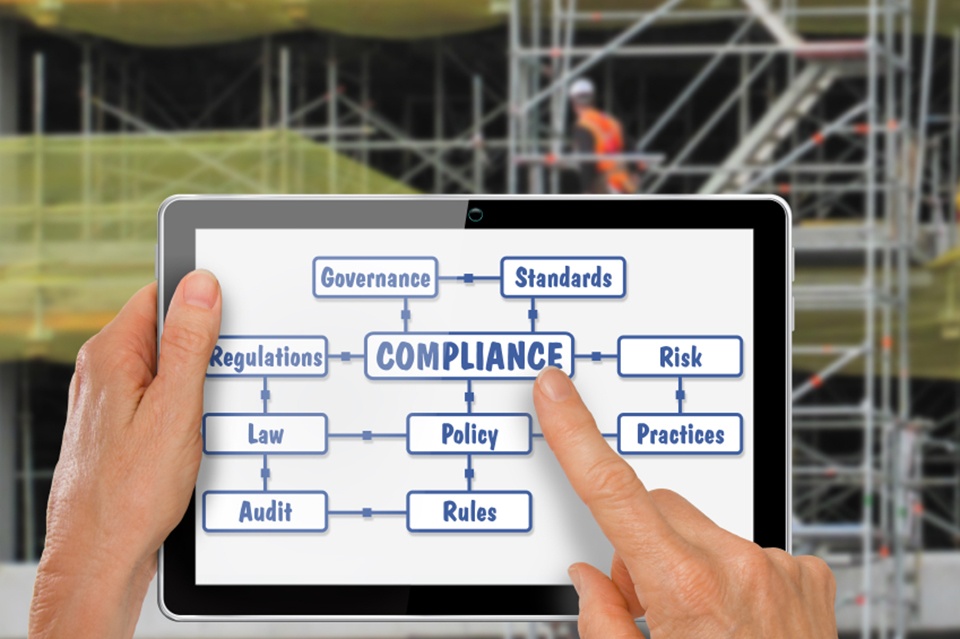If you’re a business analyst in a regulated industry, you know that defining compliance requirements is tricky. It’s tough to interpret regulations, nearly impossible to schedule time with busy financial, legal, and technology stakeholders, and regulations change – often frequently. To add to your stress, multiple regulations can affect multiple systems, regions, and projects differently and simultaneously. It’s important – but difficult – to know you’ve defined effective compliance requirements for audit-ready software.
Fortunately, you can minimize these challenges by understanding the “business” of regulatory compliance. Developing a foundational understanding of your organization’s regulatory environment through research and discussions with key stakeholders will help you develop clear, complete compliance requirements as efficiently as possible.
How well do you understand regulatory compliance concepts? Here’s a high-level introduction.
What’s a Regulation?
The Merriam-Webster dictionary defines a regulation as “a rule or order issued by an executive authority or regulatory agency of a government and having the force of law.” Failure to comply with regulations often comes with consequences, which can be serious, including significant fines or prosecution.
Regulations can come from many bodies – both internal and external. Companies may need to comply with numerous federal, state, and local regulations as dictated by legislative bodies. They may also choose to comply with guidelines or recommendations outlined by industry groups or other non-profit organizations. Organizations themselves also have policies and procedures that employees must comply with to avoid disciplinary action and keep the company safe from unneeded risk.
How do Organizations Manage Regulatory Compliance?
Three capabilities – governance, risk management, and compliance (known as GRC) – serve as the pillars many organizations use to plan for and support audit-readiness:
- Governance is the establishment of policies and continuous monitoring of their proper implementation by the members of a governing body. It’s achieved through the execution of established processes to direct and control an organization’s activities
- Risk management is the set of processes through which an organization identifies, analyzes, and responds appropriately to risks that might adversely affect it. Responses can include control, avoidance, acceptance, or transference to a third party. Organizations manage many risks, but compliance with external regulations is generally key
- Compliance refers to conformance with stated requirements and is achieved through processes that identify the requirements, assess alignment, and assess the risks and potential costs of non-compliance against the cost of being compliant.
These capabilities are complex and interdependent, even in small organizations with few regulations. But taking the time to understand them and how your organization has implemented them will help you develop more effective compliance requirements.
4 Steps to Get You Started.
Equip yourself with a foundational understanding of your regulatory environment as early as possible in a new job, project, or consulting engagement. Here are some helpful first steps:
- Schedule Time with the Experts: Review your organizational structure to identify potential GRC stakeholders, and proactively schedule time with them to learn about your regulatory ecosystem. In general, you’ll want to talk to people in your legal, financial, and technology departments to start. Some organizations also have dedicated compliance teams, governance teams, or risk management teams – all of which are likely key GRC stakeholders. These are some of the busiest people in your organization; so don’t wait until you actually need them to meet a deadline!
- Build Relationships: Ask about their roles, processes, and the regulations that concern them most. Focus on both external regulations – at the federal, state, and local level – and internal policies and procedures they use to monitor and prove compliance. Ask for recommendations for staying up-to-date with regulatory change. It may also be helpful to review compliance requirements from past projects and talk to other business analysts or product owners to confirm your understanding.
- Do Additional Research: Once you have a foundational understanding of your company’s regulatory environment, dig deeper into the most important regulations, policies, and procedures. Read them through, and register to receive updates as they evolve. It’s important that you understand the “business” of managing compliance if you want to develop complete, accurate software requirements.
- Model GRC Processes: Develop visual models of your organization’s governance, risk management, and compliance business processes, and store them in a centralized location to be used across teams and projects. These visual models help teams develop a clear, common understanding. They also help focus stakeholder conversations and enable organizations to document and refine how they work.
If regulatory compliance requirements challenge you, check back! This is the second in a series of blog posts to help you learn more about your regulatory compliance environment and how to define and manage software requirements to meet them.
Related Post: The Top 6 Reasons Compliance Demands Complicate Your Software Requirements
For more information or a demo of Blueprint’s support for compliance requirements, please contact us today.


.jpg)
